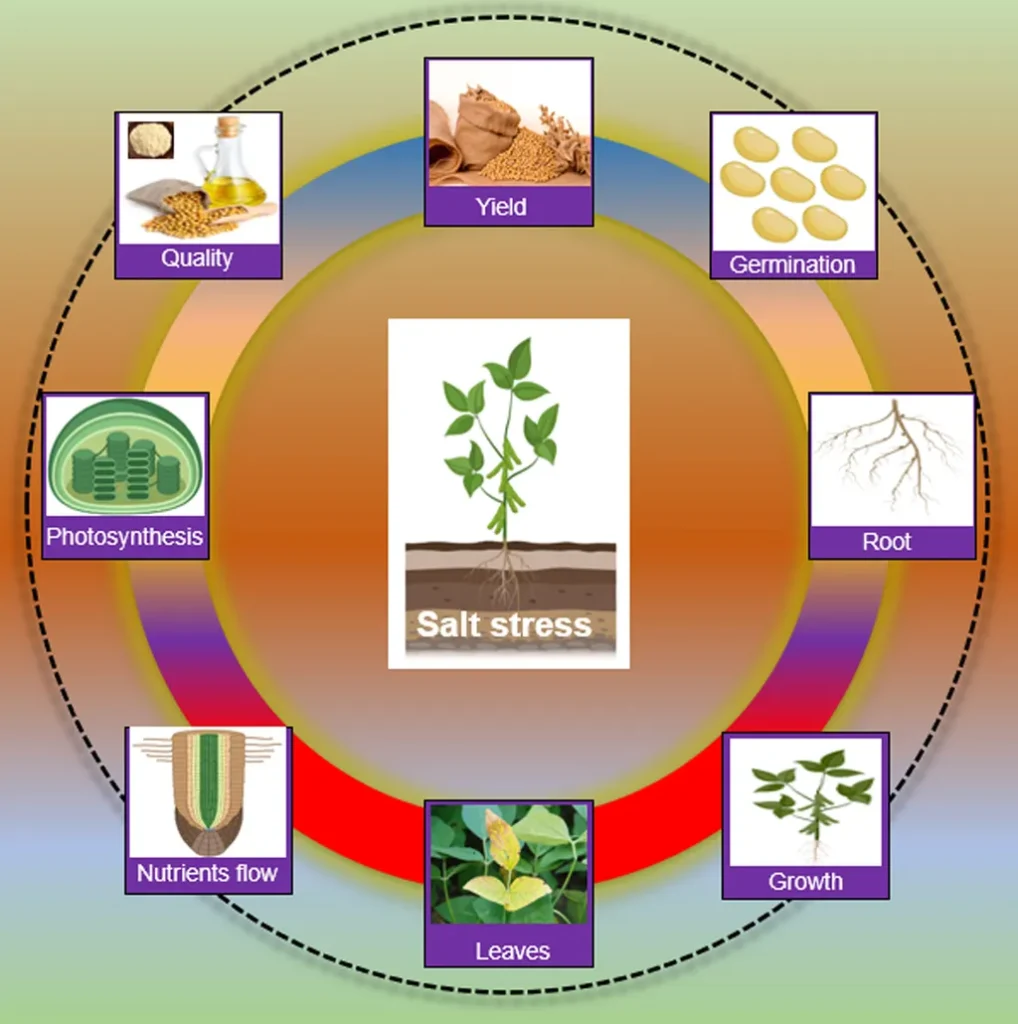In the quest to bolster soybean resilience against salt stress, a team of researchers led by Shuangzhe Li from the National Key Laboratory of Smart Farm Technology and System at Northeast Agricultural University has made significant strides. Their study, published in *Industrial Crops and Products*, delves into the intricate molecular mechanisms that enable soybeans to adapt to saline conditions, offering promising avenues for enhancing crop productivity in challenging environments.
Soybean, a staple crop with vast agricultural and commercial significance, faces substantial yield losses due to salt stress. The research team investigated the adaptive mechanisms of two soybean varieties—salt-sensitive “Dongnong50 (D)” and salt-tolerant “Qihuang34 (Q)”—under salt-induced stress. By employing a multi-omics approach, including phenotypic, physiological, proteomic, transcriptomic, and metabolomic analyses, the researchers uncovered critical pathways and molecular players that contribute to salt tolerance.
“Understanding the molecular underpinnings of salt stress adaptation in soybeans is crucial for developing cultivars that can thrive in saline soils,” said Li. “Our study provides a comprehensive overview of the genetic and metabolic responses that enable soybeans to withstand salt stress, paving the way for targeted breeding programs.”
The study revealed that salt-tolerant cultivars exhibit improved growth metrics, enhanced antioxidant enzyme functions, and reduced malondialdehyde levels when exposed to salt stress. The variety Q, in particular, showed a robust response with 3,278 differentially expressed genes (DEGs), 637 differentially expressed proteins (DEPs), and 403 differentially abundant metabolites (DAMs). In contrast, the variety D exhibited a more pronounced stress response with 11,875 DEGs, 643 DEPs, and 408 DAMs.
Key findings highlighted the activation of flavonoid biosynthesis, glutathione metabolism, and ABC transporter synthesis pathways as crucial for soybean adaptation to salt stress. The Q variety demonstrated increased transcription levels and protein abundance of CYP75B1 and glutathione S-transferase (GST), along with enhanced stability and content of metabolites like luteolin. These factors contribute to the clearance of reactive oxygen species and the accumulation of organic acids, which are vital for stress adaptation.
“Our results suggest that these candidate genes and metabolites play a pivotal role in mediating salt stress adaptation,” Li explained. “By identifying these molecular players, we can develop strategies to enhance salt tolerance in soybean cultivars, ultimately improving crop yields and sustainability.”
The study also emphasized the role of ABC transporters, particularly ABCB1 and ABCC10, in maintaining ion homeostasis and hormone transport, which are essential for salt stress adaptation. These insights provide a foundation for future research and breeding programs aimed at developing salt-tolerant soybean varieties.
The implications of this research extend beyond the laboratory, offering significant commercial impacts for the agriculture sector. As saline soils pose a growing challenge to global agriculture, the development of salt-tolerant soybean cultivars can enhance crop productivity and food security. By leveraging the findings from this study, agricultural scientists and breeders can accelerate the development of resilient soybean varieties that can thrive in adverse conditions.
“This research not only advances our understanding of soybean biology but also holds immense potential for practical applications in agriculture,” Li noted. “By translating these findings into breeding programs, we can create soybean cultivars that are better equipped to handle salt stress, ensuring sustainable agriculture and food security.”
The study, published in *Industrial Crops and Products*, represents a significant step forward in the field of agrigenomics, offering valuable insights into the molecular mechanisms of salt stress adaptation in soybeans. As researchers continue to unravel the complexities of plant stress responses, the development of resilient crop varieties becomes increasingly attainable, promising a brighter future for global agriculture.

